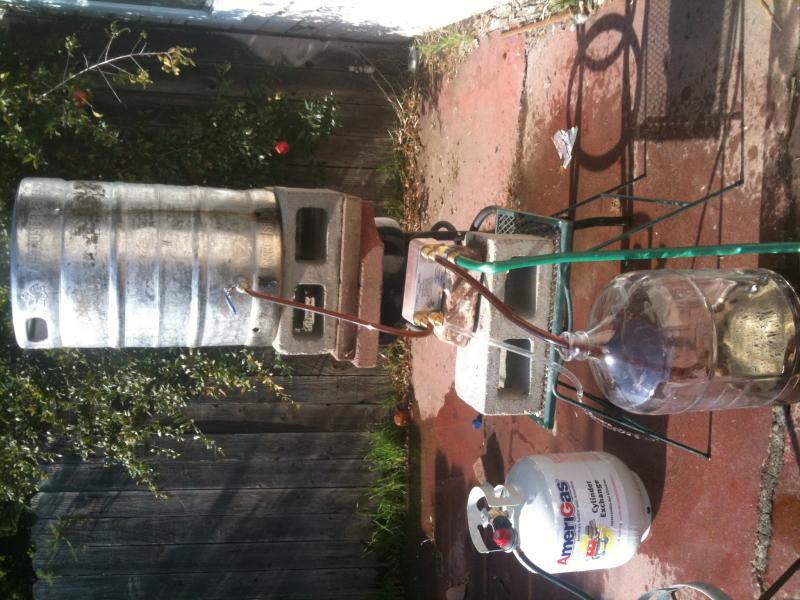The bends in the hose coming off the keggle are part of the issue. Standing the chiller upright will eliminate that. I would also have the chiller and keggle a bit higher, so there's more drop from the chiller to the carboy.
Part of why mine drains so well could be because I also have one of the RebelSmart items on it. That allows me to control how long the wort stays in the chiller, as well as showing me what the temperature of the wort coming out is. You could build one yourself with a T fitting, thermocouple and ball valve. Or skip the thermocouple, and just install a 90 degree fitting and ball valve.
I put QD's on the wort side connections to help make setting it up easier. It also makes flushing it much easier since I put a QD fitting on the backflush hose. I can run water through the wort side in both directions, getting most things out of it on brew day. I then let it sit with PBW solution in it for a day, or two, to really break-down any remaining organic matter. Some good rinses removes that once it's done. I also sanitize it with a recirculation (before turning on the chilling water feed). Usually for at least the last 5 minutes of the boil. This is where having a pump is critical.
I've been using the stainless steel hop spider (only part that's not stainless is the bag) for the past few/several batches. Love the thing. Makes adding hops super easy, and keeps the particles out of the chiller and fermenter. :rockin: Mine has a 6" diameter opening, which is another reason it's easy to use. Plus, with it being stainless, I don't need to worry (at all) about how close to the boiling wort it gets.





